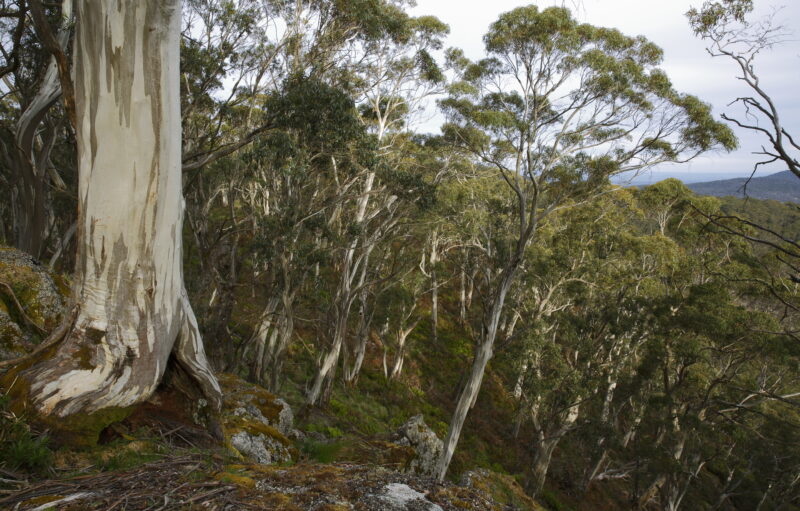PARK WATCH Article June 2025 |
Wombat Forestcare’s Gayle Osborne takes us to a national park that was promised, but is yet to be legislated
The future Wombat-Lerderderg National Park — made up of Wombat State Forest and the adjoining Lerderderg State Park — forms one of the region’s biggest areas of largely intact native vegetation. This remarkable patchwork of forest plays a vital role as a climate refuge and a sanctuary for many threatened plants, animals and fungi.
Wombat and Lerderderg forests were extensively logged and mined in the 1800s. From the 1970s, they were heavily logged again. Due to community pressure, logging ceased in 2006. Wombat Forestcare was formed in the same year.
Today, many areas still contain high-quality habitat, home to vulnerable and threatened species like Greater Gliders, Brush-tailed Phascogales, Powerful Owls, Gang-gang Cockatoos and Mountain Skinks. The forest’s damp gullies — filled with towering eucalypts, Blackwoods and Musk Daisy bushes — are a haven for migratory birds. They seasonally come alive with the calls of Rufous Fantails, Satin Flycatchers and Sacred Kingfishers, many of which raise their young here.
Wombat–Lerderderg is also a fungi ‘hotspot’, with more than 400 species, including several rare and little-known varieties. And it’s a critical water catchment, protecting the headwaters of six major Victorian rivers.
Wombat Forestcare engages in a range of activities, with a strong focus on community involvement and education, such as undertaking wildlife surveys. We also enjoy the social aspect of a forest group, with picnics and bushwalks for people who love being in the bush.
In 2010, with VNPA and other groups, we launched a campaign for national park status for the area. In June 2021, the government accepted the recommendation to create a new national park — a huge win for nature and the community. Yet we are still waiting for the park to be formally legislated. We need action now to bring this park to life!
- Read the latest full edition of Park Watch magazine
- Subscribe to keep up-to-date about this and other nature issues in Victoria
- Become a member to receive Park Watch magazine in print
